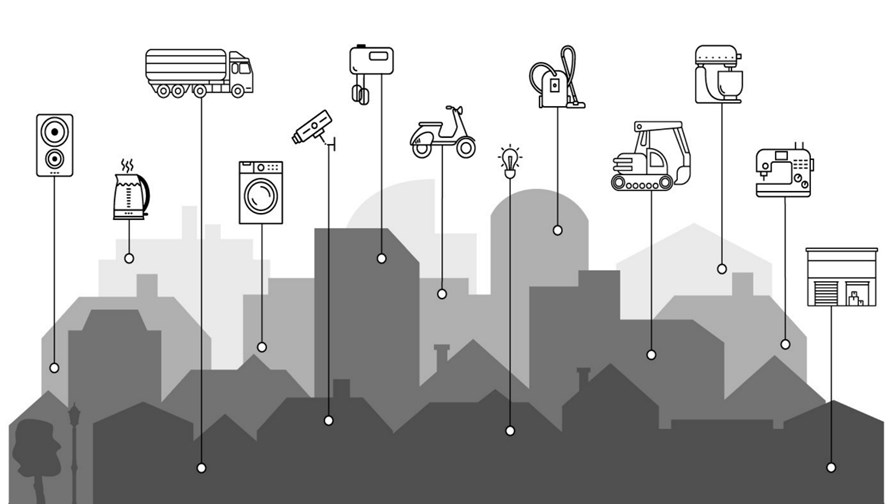
via Flickr © medithIT (CC BY 2.0)
- In terms of the immediate task of getting modules out to customers, not so good
- Like other device sectors IoT has been hit by broken supply chains
- But in terms of proving the value of general IoTishness for the longer term... probably rather well
Add the IoT to the list of Covid-19 victims, at least in the short term. ABI Research, says manufacturing shut-downs, supply chain difficulties will mostly be to blame for an estimated 18% slow-down in the net additions of IoT devices in 2020. For the longer term though there are several current issues and trends which should raise a cheer or two down at the IoT enthusiasts club.
The pandemic is a biggy (sad to say). As well as proving the value of providing granular info, the current crisis has also highlighted the value of having robots and near robots such as drones, capable of delivering or collecting items too dangerous to leave for humans
Immediate uses
IoT is primarily put to work automatically sensing conditions at near or remote locations - is a window locked? Hiow much moisture is in the soil on a distant field? Many of these sensing functions not only keep managers supplied with actionable information, but can remove the need to send someone into danger with a clipboard to gather it manually. That’s another reason why it should be highly valued when we prepare for the next pandemic.
Which brings us to unknown unknowns.
IoT, as we’ve often noted in the past, usually provides actionable data at two levels. There’s usually a primary purpose for any deployment: one that springs to mind from the past, is granular (per house) water consumption data. Readings of how much water isused and when is highly valuable when planning water supply systems, clearly. But second-order insights can be just as valuable when two or more sets of data are mashed together.
As a very simple example, water consumption data might tell you when water in a household is being consumed while electricity or gas consumption data can give you insight into when energy is being consumed to heat it up. Gaining second order insights gets really useful when trying to understand and plan production and distribution in the middle of a raging pandemic.
So one reason why IoT and the increasingly AI-based analysis applied to the resulting data is becoming even more valuable, is because organisations increasingly need to peer into, not just their own data, but to understand what’s happening with their clients and suppliers data too so as to respond to supply chain and other changes in their disrupted commercial environments.
For all these reasons, while the IoT might be being clobbered over the short term, in the longer term there’s no reason to believe that it won’t steam ahead on a steady climb. The conditions for growth being the same or better, once the factories are turned on again,
Key to telcos’ participation in the IoT game is NB IoT, the narrowband IoT radio standard adopted by the telecoms industry, using spare bits of licensed spectrum. According to IoT analyst firm Berg Insight, NB-IoT, roaming is now set to accelerate adoption following a slow start in Europe and North America.
There is a lot of NB-IoT shipment going on but as yet it doesn’t seem to be having the huge impact expected for it a decade or so ago.
One reason for that is that NB-IoT is essentially mobile IoT. It can be used for static applications too, of course, but it’s not theoretically optimised for that although module demand in Europe and North America is still driven mainly by deployments in the utilities sector (static). It shares the mobile IoT role with 2G systems (the old M2M originals) and LTE-M.
Not roaming too far from home
Its progress as a mobile technology has not been helped by a lack of roaming agreements between operators. If you have a NB-IoT technology and aim to operate it across Europe’s telecoms patchwork, then a roaming agreement - which would make the technology fit for use by logistics and freight companies - might appear a minimum requirement. Only now are these being signed off.
According to Berg, annual shipments of NB-IoT modules in Europe and North America reached close to 5 million units in 2019. But the uptake of NB-IoT is actually concentrated in China where it’s also used for smart water and gas meter applications.
Similarly, it claims, NB-IoT module demand in Europe and North America is mainly driven by deployments in the utilities sector and shipments of LTE-M modules amounted to more than 6 million units in Europe and North America, driven by the asset tracking segment. On the network side, NB-IoT networks far outnumber LTE-M nets, 91 to 35 LTE-M networks deployed globally at the beginning of 2020.
According to Fredrik Stalbrand, Senior Analyst at Berg Insight, International roaming simplifies deployments of IoT devices across multiple countries and is also essential for mobile use cases, where assets such as vehicles, trailers and containers need to be tracked across international borders.
Berg says that in Europe, network operators are now making good progress with NB-IoT coverage. Vodafone and Deutsche Telekom are leading adopters of NB-IoT in the region, offering NB-IoT services across their respective footprints.
Even international coverage beyond Europe is starting to see roaming take shape. Vodafone announced a roaming agreement with AT&T in late 2019, while Deutsche Telekom signed its first NB-IoT roaming agreements in April 2020 with partners including Vodafone, Swisscom and Telia Company. These will be followed by a complete EU roaming footprint before the end of the year.
Email Newsletters
Sign up to receive TelecomTV's top news and videos, plus exclusive subscriber-only content direct to your inbox.




